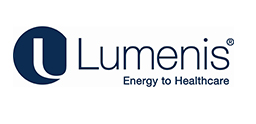When it comes to tracking metrics for your digital marketing, it can feel overwhelming. Nowadays, you can pretty much track any touchpoint a potential patient has with your brand, and it can be hard to tell where you need to put your time and energy. Today, I will break down the top 6 digital marketing metrics and share what we use on a day-to-day basis to track the performance of digital campaigns.
Despite COVID, in 2020, global brands are projected to have invested over $330 billion in digital advertising. This is a 17.6% increase year-over-year. Plus, We’re expected to see a growth of 21% this following year. That’s a significant investment in digital advertisement. And with those kinds of budgets, businesses expect advertisers to be able to drive quantifiable results.
So, let’s take a look at what you need to know to make the best possible decisions regarding your business and your advertising spend.
1. CPM
Let’s jump into the number one metric that we tend to use across digital advertising platforms – CPM.
CPM is a standard unit of measurement in the advertising world and stands for Cost per Mille (or thousand in French). It tells us how much it cost for a digital Ad to reach 1,000 users. CPMs vary depending on the platform that you’re on. From a Facebook perspective, for example, if you’re running a national campaign, the average CPM might be around $6 to $9, depending on the type of campaign that you’re running.
If it’s a video campaign, it would probably be on the cheaper side(around $6). If it’s a conversion-based campaign (to get somebody to buy something), that might be more expensive, closer to $11 or $12.
CPMs vary by platform, but they are a great starting point that we can use from a digital advertising perspective to see how effective a specific channel/platform is in getting our Ads in front of people.
2. CPV / CTP / CPC
The next metric I want to showcase is CPV or Cost per View. CPV is a critical metric for when you’re running video campaigns, especially video campaigns optimized for video views. On average, national video campaigns can have a CPV of $0.02 – $0.03. The key thing to note here is that it doesn’t mean that you’re paying 0.02 cents for a person to view the entire video.
The way platforms tend to structure this is that you have a Cost per View for someone who watched a video for at least 3 seconds. You could also calculate what’s called a Cost Per Through Play (CTP) or Cost Per Completion (CPC), which you might tend to see within the social media platforms closer to 0.08 cents 0.12 cents depending on the audience that you’re targeting.

3. Video Completion Rate
This metric is also tied to video campaigns. Video Completion Rate is the percent of people that watched your video from start to finish. Video Completion Rate is important when you have video campaigns where it’s essential for the consumer to watch the video to completion for them to have complete “association” with the message that this video is trying to embody.
However, depending on your objectives, Video Completion Rate might not be your main KPI (Key Performance Indicator) because having someone view your entire video might not be the end goal. Your video campaign may have the goal of bringing more people to your website. It would be your Click-Through Rate (CTR) or your Return On Advertising Spend (ROAS) that you should pay attention to in those situations.
#4. CTR & CPC
Moving the conversation to Click-Through-Rate (CTR), this metric is widespread and mainly used for website traffic campaigns. CTR is the ratio of users who click on a specific link to the number of total users who viewed the ad. It can be displayed in a simple formula: clicks ÷ impressions = CTR
If you are running a campaign optimized for video views, you can’t expect to see a high Click-Through Rate (CTR). This is because these digital algorithms will show the Ads to the people will are the most likely to watch the video and not necessarily click on the link and leave the social media platform or digital platform that they’re on.
Make sure to keep the metrics you are looking at in context. You can’t just look at one singular metric. You have to look at multiple metrics in the context of the actual objective of the campaign. Another prevalent metric is CPC, which stands for Cost per Click; this is a metric that we tend to use if we were doing a website traffic campaign (i.e. driving users to your website).
#5. CPA
Now on to CPA, which stands for Cost per Action. This is the cost for somebody to take action on your digital asset (website, post, e-newsletter). An action could be a lot of different things; it could be the cost to get someone to submit a lead on your website. CPA can be tied to website metrics such as the cost to get somebody to spend three minutes on a particular page, maybe the “book appointment” page of your website. This could vary slightly, but it is a fundamental lower funnel metric that shows the impact of your advertising.

#6. ROAS
Lastly, we have ROAS, which stands for Return On Advertising Spend, and this is a simple calculation that looks at how much money you’ve put into your ads versus how much money you’ve gained back. For example, if you were running a paid social media campaign or search campaign and spent $10,000 and got $100,000 back, that is a ten to one ROAS.
Final Words
This by no means a comprehensive list of all the metrics that are out there. It is very important for us to be able to showcase the impact of your investment in advertising on your practice. When discussing digital strategies, we recommend placing your investment in the buckets to give you the best return on our investment. These buckets will be the channels/platforms that, based on our experience and data, will give us the most efficient digital marketing metrics. This includes the highest CTRs, the lowest CPCs, the most robust Video Completion Rates, etc. so that we’re maximizing your investment at the end of the day.
Want to learn more about marketing metrics? Watch this recently recorded webinar.
































